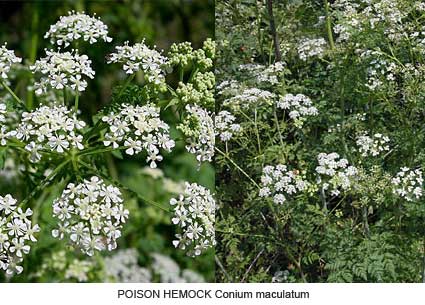
Look at the quote below, found in a Slate article:
According to Christian mythology, the hemlock plant became poisonous after growing on the hillside of Jesus’ crucifixion. When his blood touched the plant, it turned forever toxic.
Now, some of you may be saying that you have never heard any such thing. Well, neither have I. In fact, the statement above does not even make sense. Why not? Well, in the Greek world, the death of Socrates in the 320’s BC was well-known. Plato had written of it and he had made it clear that Socrates had died by ingesting hemlock. No Christian in the Greek world would have believed that hemlock became poisonous because of the Crucifixion because they already knew it to be poisonous.
So, I did a Google search. And, it turns out that I could not find the story. What I could find is that various people speculate that the vinegar and gall, or vinegar and myrrh, or vinegar that John said he finally drank at the end was actually a drugged drink of vinegar and hemlock. The purpose of the drink was both to ease the criminal’s suffering and to speed the end. This is the idea that the book, The Passover Plot, follows. The book claims that Jesus was drugged and his breathing was depressed so that he only appeared to be dead. This is the “swoon theory” that has no support left today.
So, from where did that first quote come? Well, maybe there was some medieval myth somewhere about hemlock becoming poisonous after the Crucifixion, but I certainly did not find it. This means that if that myth was around sometime in the Middle Ages, it must not have lasted a long time.
It appears to me that this is some bad writing and an indication of the failure of an editor to question a particularly tendentious statement. Sadly, I half expect that I will see it in a Facebook post that purports to show how stupid Christians are.



Surprised this one WASN’T Medieval in origin. It sounds like one of those pious folk legends/Gospel fanfics that got accreted onto the life of Christ on a regular basis back then. Either it’s an attempt to start a new one (like the Christmas candy cane one) or Slate dug up a REALLY obscure one.